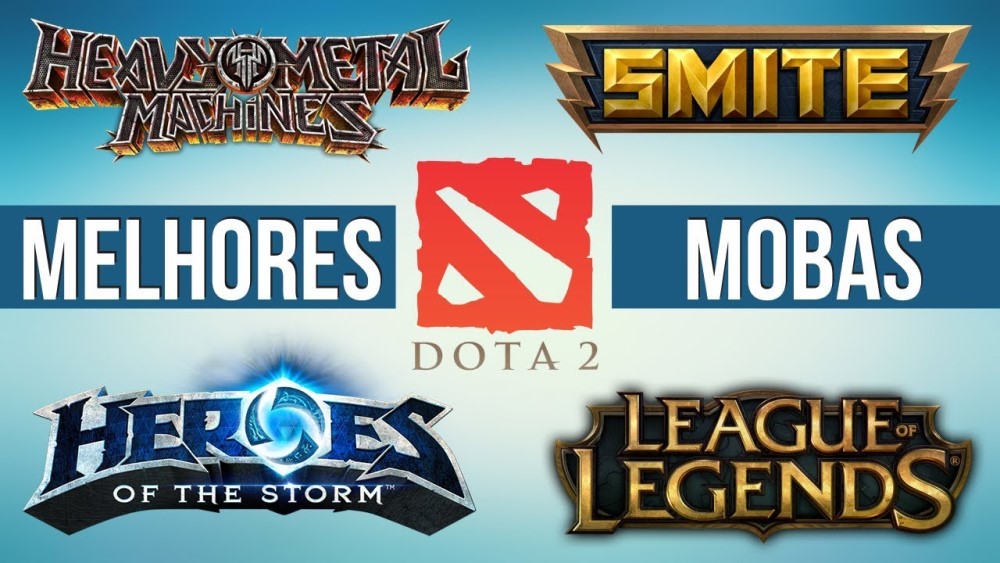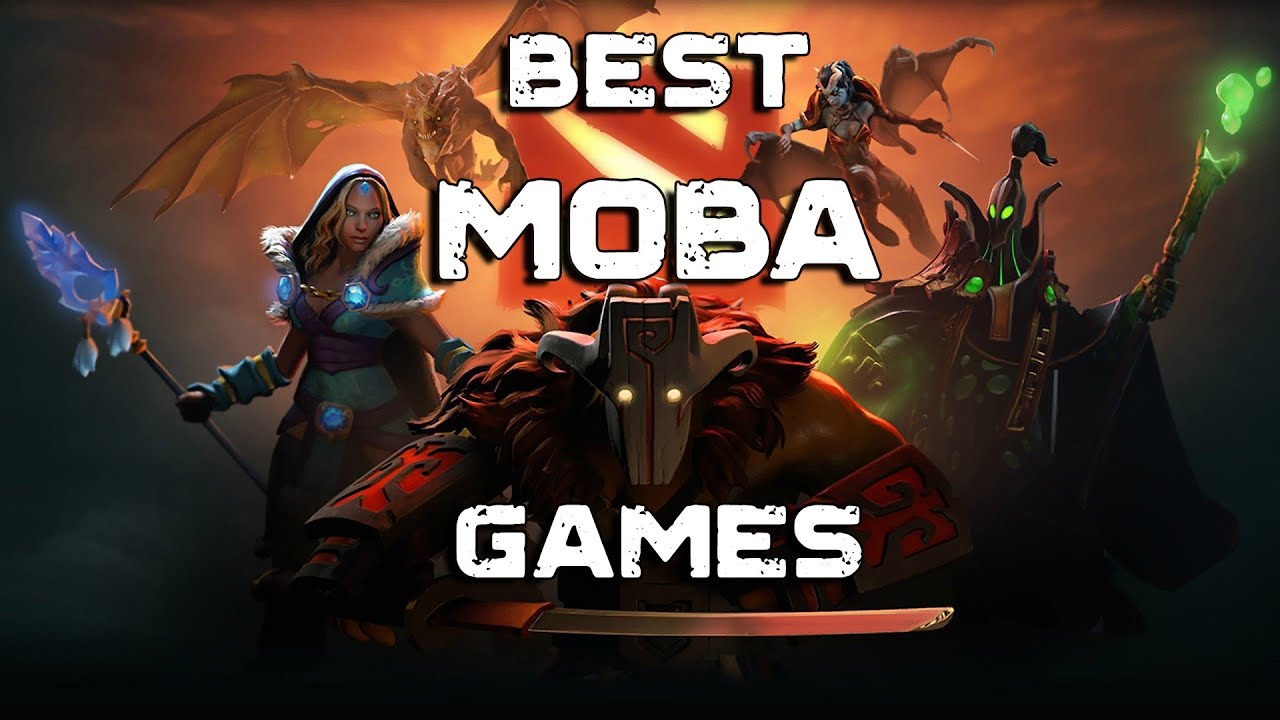A recent study has shown that one of the most popular genres in Esports is taking a hit in the market. MOBA games, which are typically focused on team play and strategy, have been waning in popularity in recent years. This is likely due to the growing popularity of other genres, such as first-person shooters and battle royals.
However, there are still some MOBA games out there that are loved by a large number of players. Some of the most famous examples include League of Legends and Dota 2 which have attracted millions of players and viewers worldwide. These games are still very popular and there are constantly new updates and additions to them.
MOBA games require a high level of skill and coordination, making them an exciting and engaging sport to watch and participate in. With a growing community of players and fans, MOBA games are poised to continue their rise as a major force in the world of esports.
In this article, we will talk about MOBA games and the information related to it. Our content includes:
- About MOBA games as a sport
- Popular MOBA Games
- Esports in MOBA Games
- How to Play MOBA Games
- MOBA Game Reviews
1. About MOBA games as a sport
Everything you need to know about MOBA games and their popularity as a sport
MOBA stands for Multiplayer Online Battle Arena, and it refers to a genre of video games where players control a single character or hero, usually with unique abilities, and work together with their team to destroy the opposing team’s base or objective. The gameplay typically involves strategic decision-making, resource management, and teamwork.
The popularity of MOBA games as a sport has grown rapidly in recent years, with games like League of Legends, Dota 2, and Heroes of the Storm becoming some of the most-watched games in the world. These games have huge player bases and dedicated communities, with millions of players competing in regular tournaments and professional leagues.
In a MOBA game, two teams of players work together to defeat the opposing team’s base while defending their own. Each player controls a single character, or champion, with unique abilities and strengths. The game requires strategic planning, quick decision-making, and effective communication between team members.
MOBA games have several features that make them appealing as a competitive sport. They require a high level of skill, strategy, and teamwork, with players needing to master their chosen hero, understand their role within the team, and work together with their teammates to achieve victory. The games are also highly engaging and entertaining to watch, with exciting action and dramatic moments that keep viewers on the edge of their seats.
Additionally, MOBA games have a strong esports infrastructure, with dedicated leagues and tournaments, sponsorships, and prize pools that can reach millions of dollars. This has helped to elevate MOBA games to the level of mainstream sports, with professional players becoming celebrities and esports events drawing huge crowds and online viewership.
History of MOBA games
The history of MOBA games as a sport can be traced back to the early 2000s, when the first games in the genre were created. One of the earliest and most influential games was Defense of the Ancients (DotA), a custom map for the popular game Warcraft III. DotA was created by a group of modders who added new heroes, abilities, and gameplay mechanics to the game, and it quickly gained a large following in the Warcraft III community.
In 2009, Valve Corporation, the company behind popular games like Half-Life and Counter-Strike, hired the lead developer of DotA, IceFrog, and began work on a standalone MOBA game called Dota 2. The game was released in 2013 and quickly became one of the most popular and successful MOBA games in the world.
Around the same time, another MOBA game, League of Legends (LoL), was also growing in popularity. LoL was developed by Riot Games and was heavily influenced by DotA, but it introduced several new gameplay mechanics and features that helped to differentiate it from other MOBA games.
The popularity of MOBA games as a sport really took off in the early 2010s, with the launch of several professional leagues and tournaments. The first major MOBA tournament was the 2011 Dota 2 International, which had a prize pool of $1 million and was held in front of a live audience at Gamescom in Cologne, Germany. The tournament was a huge success and helped to establish MOBA games as a legitimate competitive sport.
Since then, MOBA games have continued to grow in popularity, with millions of players and a thriving esports scene. Major tournaments like the Dota 2 International and the League of Legends World Championship now have prize pools that can reach tens of millions of dollars, and professional players are treated like celebrities in the gaming community. MOBA games have truly become a major force in the world of esports.
Links to related pages within the site and external sources
Here are some links to related pages within this site and external sources for further reading on MOBA games:
Internal links:
- The Overview of Auto Chess MOBA Apk For iOS
- Top 5 Best Emulator For MOBA Games Today
- How To Win MOBA Game? 8 Useful Guides You Shouldn’t Ignore
- How to Improve MOBA Skills? 8 Tips to Get Better
- The 5 Best Moba Game You Will Be Immersed
External links:
- Official Dota 2 website
- Official League of Legends website
- EsportsEarnings.com – Database of esports earnings and rankings
- Liquipedia – Wiki resource for esports
- Esports Insider – News and analysis on esports industry
2. Popular MOBA Games
There are several popular MOBA (Multiplayer Online Battle Arena) games, each with their own unique gameplay, mechanics, and fanbase. Here is an overview of some of the most popular MOBA games:

League of Legends (LoL)
League of Legends (LoL) is a free-to-play online multiplayer battle arena (MOBA) game developed and published by Riot Games. It was released in 2009 for Microsoft Windows and macOS and has since become one of the most popular video games in the world.
LoL is played by millions of players globally, and it has a competitive esports scene with multiple professional leagues and tournaments. The game has a constantly expanding roster of over 150 playable champions, each with unique abilities and playstyles.
The game’s developers have also made efforts to create an inclusive and diverse community, with regular events and updates that celebrate diversity and inclusivity. LoL has also been used to raise funds for various charitable causes, including cancer research and disaster relief efforts.
League of Legends (LoL) is a popular MOBA game with a complex gameplay system that requires strategic thinking and quick reflexes. Here is a detailed explanation of the gameplay mechanics and strategies in LoL:
Objectives and Map:
The main objective in LoL is to destroy the enemy team’s Nexus, which is located in their base. The game is played on a map called Summoner’s Rift, which is divided into three lanes (top, middle, and bottom) and a jungle area in between.
Each lane has three turrets and an inhibitor, which is a structure that, when destroyed, allows the team’s minions to become stronger and attack the enemy base. There are also neutral objectives on the map, such as the Baron Nashor and Dragon, which provide buffs to the team that defeats them.
Champions and Roles:
Players choose a champion to play as, each with their own unique abilities and playstyle. There are five main roles in LoL:
- Top laner: plays in the top lane and typically plays tanky or bruiser champions.
- Jungler: roams the jungle and helps control neutral objectives and gank enemy lanes.
- Mid laner: plays in the middle lane and typically plays mage or assassin champions.
- ADC (Attack Damage Carry): plays in the bottom lane with a support and deals physical damage with auto-attacks.
- Support: plays in the bottom lane with an ADC and assists with crowd control, healing, and other support abilities.
Gold and Items:
Players earn gold by killing minions, neutral monsters, and enemy champions. Gold can be used to purchase items that provide additional stats and abilities for the champion.
Players must choose items based on their champion’s playstyle and the enemy team’s composition. For example, if the enemy team has a lot of crowd control, a player might choose to purchase an item that provides immunity to crowd control effects.
Abilities and Cooldowns:
Each champion has four abilities that can be used in combat. These abilities have cooldowns, which means they can only be used once every few seconds.
Players must use their abilities strategically to outplay their opponents and secure kills. Abilities can also be combined with each other to create powerful combos.
Vision and Map Control:
Vision is an important aspect of LoL gameplay. Players can place wards on the map to reveal enemy movements and objectives. This information can be used to make informed decisions about when to engage in combat or take objectives.
Players must also control the map by pushing lanes and securing neutral objectives. This helps to create pressure on the enemy team and provides opportunities for strategic plays.
Overall, LoL is a complex game with many different gameplay mechanics and strategies. To be successful, players must have a deep understanding of the game’s systems and work together as a team to outplay their opponents.
Dota 2
Dota 2 is a free-to-play MOBA game developed and published by Valve Corporation. It was released in 2013 for Microsoft Windows and has since been made available for macOS and Linux. Dota 2 is a sequel to Defense of the Ancients (DotA), which was a community-created mod for Blizzard Entertainment’s Warcraft III: Reign of Chaos.
Dota 2 has a steep learning curve and requires strategic thinking and quick reflexes to be successful. Players must also work together as a team to outplay their opponents and secure objectives on the battlefield. The game’s mechanics, such as creep blocking and creep stacking, add an additional layer of complexity to the gameplay.
Dota 2 has a competitive esports scene, with regular tournaments and leagues held around the world. The largest Dota 2 tournament is The International, which has a multi-million dollar prize pool and attracts top players from around the globe.
Dota 2 is a complex game with a steep learning curve, and understanding its gameplay mechanics and strategies is essential for success. In this section, we will discuss some of the core gameplay mechanics and strategies in Dota 2.
The Map and Objectives:
Dota 2 is played on a large map, known as the battlefield, which is divided into three main lanes: top, middle, and bottom. The objective of the game is to destroy the enemy team’s Ancient, a large structure located in their base.
To reach the enemy Ancient, players must destroy a series of structures, including towers and barracks, which are located along each lane. Each destroyed structure weakens the enemy team and strengthens the player’s team.
Heroes:
Dota 2 has a roster of over 120 unique heroes, each with its own set of abilities, strengths, and weaknesses. Heroes are divided into three main categories: carry, support, and initiator.
Carry heroes are responsible for dealing a lot of damage and are often the primary source of damage for their team. Support heroes assist the carry heroes by healing them, providing buffs, and controlling the battlefield. Initiator heroes are responsible for starting team fights by disabling enemy heroes or initiating attacks.
Players must choose their heroes based on their team’s needs and the strengths and weaknesses of the opposing team.
Creeps:
Creeps are AI-controlled units that spawn periodically and move along each lane toward the enemy base. Creeps provide gold and experience when killed, which players can use to buy items and level up their heroes. Players can also manipulate creep waves by blocking them or stacking them, which can help control the flow of the game and give players an advantage.
Items:
Items are a crucial aspect of Dota 2 gameplay, and players must carefully choose and manage their items to be successful. Items provide a variety of benefits, including increased damage, health, and mana, as well as unique abilities.
Players can purchase items at the shop located in their base or at various shops located throughout the map. Players must also manage their gold effectively to purchase the right items at the right time.
Strategies:
Dota 2 is a game of strategy and teamwork, and players must work together to outplay their opponents and secure objectives on the battlefield.
Some common strategies in Dota 2 include:
- Pushing: Players focus on destroying enemy structures to weaken the opposing team and gain an advantage.
- Ganking: Players coordinate to ambush and kill enemy heroes to gain an advantage and disrupt the opposing team’s gameplay.
- Farming: Players focus on killing creeps to gain gold and experience to level up their heroes and buy items.
- Teamfighting: Players coordinate to engage in team fights to take down enemy heroes and gain an advantage.
Overall, Dota 2 is a complex and challenging game that requires strategic thinking, quick reflexes, and teamwork to be successful. Understanding the game’s mechanics and developing effective strategies is essential for success in this competitive esport.
3. Esports in MOBA Games
Esports and its role in MOBA games
Esports, or electronic sports, is a form of competitive video gaming in which professional players compete against each other in organized tournaments and leagues. Esports has gained a lot of popularity in recent years, particularly in MOBA games such as League of Legends, Dota 2, and Heroes of the Storm.
MOBA games are particularly well-suited for esports because they require strategic thinking, quick reflexes, and teamwork to be successful. These games also have a steep learning curve and a dedicated community of players, which has led to the development of a thriving esports scene.
Esports tournaments and leagues in MOBA games typically involve teams of players competing against each other in a series of matches. The best teams from around the world compete in high-profile events such as the League of Legends World Championship and The International, which have multi-million dollar prize pools.
Esports has become a big business, with major sponsors and investors getting involved in the industry. Esports events are often broadcast online and on television, with millions of viewers tuning in to watch the action.
The popularity of esports in MOBA games has also led to the development of professional leagues and teams. Top players can earn a living by competing in esports tournaments, signing sponsorship deals, and streaming their gameplay on platforms like Twitch.
Overall, esports has had a significant impact on the popularity and success of MOBA games. It has helped to build a dedicated community of players and fans, as well as generate significant revenue for game developers and organizers.
Overview of the competitive scene and major tournaments
The competitive scene in MOBA games is a thriving and constantly growing industry, with major tournaments and leagues held throughout the year. In this section, we will provide an overview of the competitive scene in MOBA games, including some of the major tournaments and leagues.
League of Legends has a dedicated league system, with professional teams competing in regional leagues, such as the League Championship Series (LCS) in North America and the League of Legends European Championship (LEC) in Europe. The best teams from each region compete in international events such as the Mid-Season Invitational and the World Championship, which has a multi-million dollar prize pool.
Dota 2 is another hugely popular MOBA game with a thriving competitive scene. The game has an annual tournament called The International, which has a prize pool that often exceeds $30 million. In addition to The International, Dota 2 also has a system of professional leagues and tournaments, such as the Dota Pro Circuit, which features teams from around the world competing in a series of events throughout the year.
Interviews with professional players and coaches
Interviews with professional players and coaches in MOBA games can provide valuable insights into the strategies, tactics, and mindset required to succeed at the highest level of competition. These interviews can also shed light on the evolving nature of the industry and the challenges and opportunities facing professional players and teams.
Professional players and coaches can share their experiences and perspectives on a wide range of topics, including the intricacies of game mechanics, the importance of communication and teamwork, the role of strategy and adaptation, and the mental and emotional demands of competitive play.
Through these interviews, aspiring players can gain valuable insights and advice on how to improve their skills, develop effective strategies, and navigate the challenges of the competitive scene. They can also learn about the different paths and opportunities available for pursuing a career in professional MOBA gaming.
Analysis of gameplay strategies and trends
MOBA games are complex and dynamic, with many different gameplay strategies and trends that can change from patch to patch and from game to game. In this section, we will provide an overview of some of the most common gameplay strategies and trends in MOBA games.
Early game aggression: One common trend in MOBA games is early game aggression, which involves teams trying to secure early advantages by pushing aggressively and taking control of key objectives on the map. This can involve coordinated ganks, aggressive lane pushing, and early tower dives. Early-game aggression can be risky, but if successful, it can set a team up for a dominant mid-game.
Map control: Another key gameplay strategy in MOBA games is map control, which involves teams trying to secure vision and control over key objectives on the map, such as towers, neutral objectives, and enemy jungle camps. This can involve using wards and other vision-granting abilities to spot enemy movements, as well as coordinated rotations and team fights to secure objectives.
Team fighting: Team fighting is a central element of MOBA gameplay, with teams trying to coordinate their abilities and ultimates to win fights and gain advantages on the map. This can involve engaging in 5v5 fights, or more strategic skirmishes in smaller groups. Successful team fighting often requires strong communication, coordination, and execution, and can be a key factor in determining the outcome of a game.
Meta trends: In addition to specific gameplay strategies, there are also broader meta trends that can influence gameplay in MOBA games. These can include changes to hero or champion balance, itemization trends, and strategic shifts in how teams approach the game. For example, in League of Legends, recent meta trends have seen an emphasis on fast-paced, aggressive play styles, with a focus on early-game advantages and early objectives.
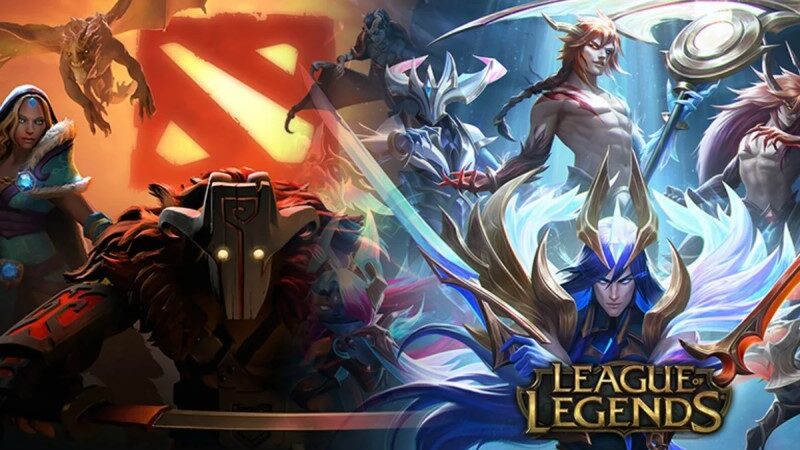
4. How to Play MOBA Games
Overview of the basic mechanics and gameplay elements of MOBA games
MOBA games (Multiplayer Online Battle Arena) are team-based strategy games that involve two teams of players competing against each other on a virtual battlefield. In this section, we will provide an overview of the basic mechanics and gameplay elements of MOBA games.
Heroes/Champions: MOBA games feature a roster of heroes or champions, each with unique abilities and roles. Players choose a hero to play as and work with their team to complete objectives, defeat enemy heroes, and ultimately destroy the enemy team’s base.
Map: MOBA games take place on a map with three lanes, each with towers and inhibitors that must be destroyed in order to advance toward the enemy base. The map also contains jungle areas with neutral monsters that can be killed for gold and experience.
Gold and Experience: Players earn gold and experience by killing enemy minions, monsters, and enemy heroes. Gold can be used to purchase items that enhance a hero’s abilities, while experience is used to level up a hero and unlock new abilities.
Abilities: Each hero has a set of unique abilities that can be used to attack, defend, and maneuver on the battlefield. Abilities can be upgraded by leveling up and by purchasing items that enhance a hero’s stats and abilities.
Objectives: In addition to destroying enemy towers and inhibitors, MOBA games feature several key objectives that can be captured and controlled to gain an advantage. These include neutral monsters in the jungle, dragon,s or other creatures that can provide buffs to the team that kills them.
Teamwork: MOBA games require strong teamwork and communication in order to be successful. Players must coordinate their efforts and work together to secure objectives, defend against enemy attacks, and ultimately destroy the enemy base.
Strategy: MOBA games are highly strategic, with players needing to balance aggressive play with defensive tactics, manage resources effectively, and make strategic decisions about when to engage in team fights and when to retreat.
Detailed explanations of the different roles and positions in a typical MOBA game
MOBA games typically feature a roster of heroes or champions with unique abilities and roles. Each hero or champion is assigned to a particular role or position, and these roles are designed to work together as part of a team. In this section, we will provide a detailed explanation of the different roles and positions in a typical MOBA game.
Top lane: The top lane is typically occupied by a bruiser or tank hero who is responsible for holding down the top lane and engaging in 1v1 or 2v1 skirmishes with the enemy team. The top lane is also responsible for keeping control over the top side of the map and securing important objectives in the area, such as the Rift Herald or Baron Nashor.
Jungle: The jungle is occupied by a hero who specializes in farming neutral monsters in the jungle, ganking enemy lanes, and securing important objectives such as Dragon or Baron Nashor. The jungle role requires strong map awareness and strategic decision-making, as the jungle hero must balance farming with ganking and objective control.
Mid lane: The mid lane is typically occupied by a mage or assassin hero who specializes in dealing high burst damage to enemy heroes and controlling the mid section of the map. The mid lane hero is responsible for securing vision control and ganking the top and bottom lanes when opportunities arise.
ADC/Bot lane: The ADC (Attack Damage Carry) role is typically played in the bot lane, alongside a support hero. The ADC hero is responsible for dealing consistent physical damage to enemy heroes and objectives, while the support hero provides utility and protection for the ADC. The bot lane is also responsible for securing control over the bottom side of the map and securing important objectives such as Dragon or Rift Herald.
Support: The support role is typically played alongside the ADC in the bot lane. The support hero is responsible for providing utility, protection, and healing to their team, while also securing vision control and assisting with ganks and objective control throughout the game.
Tips and tricks for improving gameplay and winning matches
Improving your gameplay and winning matches in MOBA games requires a combination of skill, strategy, and teamwork. In this section, we will provide some tips and tricks that can help you improve your gameplay and increase your chances of winning matches:
- Know your hero: Understanding your hero’s abilities, strengths, and weaknesses is crucial to playing effectively. Take the time to learn your hero’s mechanics and playstyle and focus on mastering them.
- Practice last hitting: Last hitting refers to landing the final blow on enemy minions to earn gold and experience. Practicing last hitting can help you increase your gold income and level up faster.
- Map awareness: Pay attention to the minimap to keep track of enemy movements and potential gank opportunities. Map awareness is crucial to avoiding surprise attacks and securing objectives.
- Warding: Warding involves placing wards (sight-providing items) in strategic locations to gain a vision of enemy movements and objectives. Warding is crucial to maintaining map control and preventing surprise attacks.
- Communicate with your team: Effective communication is key to successful team play. Use pings, chat, and voice communication to coordinate with your team and plan strategies.
- Manage your resources: Managing your resources effectively, including gold, experience, and mana/energy, is crucial to playing effectively. Avoid wasting resources and plan ahead for objectives and team fights.
- Practice, practice, practice: The more you play, the better you will get. Practice new heroes, try out different playstyles, and work on improving your mechanics and decision-making skills.
- Analyze your gameplay: After each game, take the time to review your gameplay and identify areas for improvement. Watch replays, analyze your decision-making, and seek feedback from more experienced players.
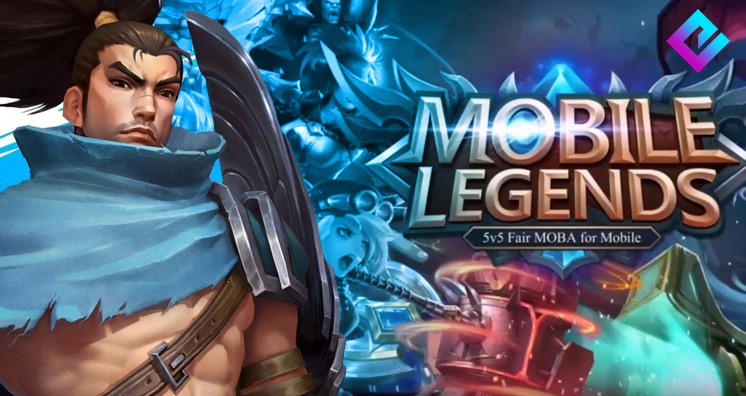
5. MOBA Game Reviews
In-depth reviews of popular MOBA games
League of Legends (LoL):
- Gameplay mechanics: LoL has intuitive gameplay mechanics that are easy to understand for new players, but still provide a high skill ceiling for experienced players. The game’s focus on team fights and objective control makes for exciting gameplay.
- Graphics: LoL has a bright and colorful art style that is appealing to many players. However, the graphics can appear outdated compared to more modern games.
- User experience: LoL has a large and active community, with frequent updates and events that keep players engaged. The game can sometimes suffer from toxic behavior in its player base, but Riot Games has made efforts to address this issue.
Dota 2:
- Gameplay mechanics: Dota 2 has complex gameplay mechanics that can be difficult to understand for new players, but provide a high skill ceiling for experienced players. The game’s focus on strategic positioning and skill usage makes for intense gameplay.
- Graphics: Dota 2 has high-quality graphics and character designs that are visually impressive. However, the game can be graphically demanding, which can make it difficult to run on lower-end systems.
- User experience: Dota 2 has a dedicated and passionate community, with frequent updates and events that keep players engaged. The game can be challenging for new players, but the community is generally helpful and supportive.
Heroes of the Storm (HotS):
- Gameplay mechanics: HotS has simpler gameplay mechanics compared to other MOBAs, which makes it more accessible for new players. The game’s focus on team fights and objectives makes for fast-paced gameplay.
- Graphics: HotS has a colorful and cartoony art style that is visually appealing. However, the graphics can appear less detailed compared to more realistic games.
- User experience: HotS has a friendly and welcoming community, with a focus on teamwork and coordination. The game is generally less competitive compared to other MOBAs, which can make it more relaxing to play.
Comparison of different MOBA games
There are several different MOBA games available, each with its own unique features and gameplay mechanics. LoL is one of the most popular MOBA games and has a large player base. It has a simple, intuitive interface and a wide range of champions to choose from. The game’s focus is on team fights and objective control, with players needing to work together to destroy the enemy team’s base.
Dota 2 is another popular MOBA game that features complex gameplay mechanics and a high skill ceiling. It has a larger number of playable heroes than LoL, and its gameplay revolves around strategic positioning and skill usage. The game also has a strong focus on team coordination and objective control.
HotS is a MOBA game developed by Blizzard that features heroes from several of their popular game franchises. It has a more casual gameplay style than LoL or Dota 2, with simpler mechanics and shorter game times. The game also has a greater focus on team fights and objectives, with several unique map objectives that can swing the game in either team’s favor.
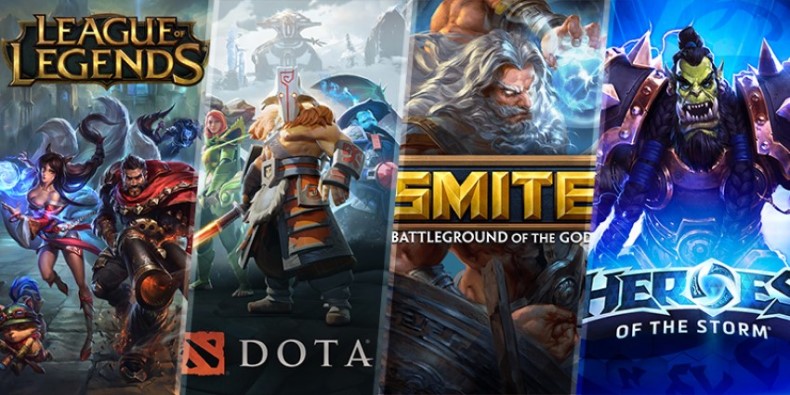
Conclusion
In conclusion, MOBA games have become one of the most popular genres in the esports industry. With millions of players worldwide, and major tournaments with million-dollar prize pools, MOBAs like Dota 2 and League of Legends have established themselves as some of the biggest esports in the world.
However, the MOBA market is facing some challenges in recent years. The industry is becoming increasingly competitive, with new games and genres emerging to challenge the dominance of MOBAs. Additionally, some players and fans have raised concerns about issues like toxic behavior and burnout among professional players.
Despite these challenges, MOBA games remain a major force in the esports industry, with dedicated fan bases and passionate players and teams continuing to push the limits of what’s possible in competitive gaming. With ongoing innovation and evolution in the industry, it will be interesting to see how MOBAs adapt and grow in the years to come.
Thank you for visiting our blog! Here’s what you might want to know about MOBA games. Furthermore, we also provide tips and tricks for improving gameplay and winning matches. Enjoy and gain knowledge for you now as they can help you in future matches. If this blog was helpful to you, please share it with everyone!
